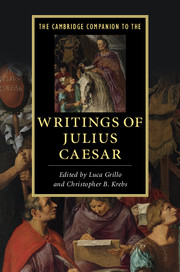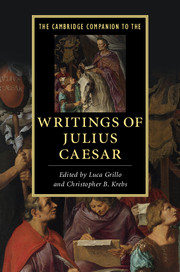The Art of Caesar's Bellum Civile
Traditional approaches have reduced Caesar's Bellum Civile to a tool for teaching Latin or to one-dimensional propaganda, thereby underestimating its artistic properties and ideological complexity. Reading strategies typical of scholarship on Latin poetry, like intertextuality, narratology, semantic, rhetorical and structural analysis, cast a new light on the Bellum Civile: Ciceronian language advances Caesar's claim to represent Rome; technical vocabulary reinforces the ethical division between 'us' and the 'barbarian' enemy; switches of focalization guide our perception of the narrative; invective and characterization exclude the Pompeians from the Roman community, according to the mechanisms of rhetoric; and the very structure of the work promotes Caesar's cause. As a piece of literature interacting with its cultural and socio-political world, the Bellum Civile participates in Caesar's multimedia campaign of self-fashioning. A comprehensive approach, such as has been productively applied to Augustus' program, locates the Bellum Civile at the interplay between literature, images and politics.
- Restores the Bellum Civile to its position as a masterly piece of literature, written with sophisticated narrative devices
- Considers the work in its historical context, showing how literature and politics interact
- Explores the Bellum Civile in the light of Caesar's multimedia campaign of self-fashioning, which included monuments, coins, polemic pamphlets, letters and even his own hairstyle
Reviews & endorsements
"The Art of Caesar's Bellum Civile is a perfect book for a college-level Caesar class and an excellent book for those teaching Caesar at any level."
Bryn Mawr Classical Review
"… it is only through the close reading of [Caesar's] narrative that [his] Bellum Civile impresses, through its intricate and artistic propaganda - pure but unsimple. [Grillo's] study is superb at teasing out its complexities."
W. Jeffrey Tatum, Journal of Roman Studies
Product details
March 2015Paperback
9781107470675
234 pages
229 × 151 × 12 mm
0.34kg
1 table
Available
Table of Contents
- Introduction. Between ancient and modern approaches: admirers and detractors of Caesar
- 1. The swift and the slow: Caesar's art of characterization
- 2. The great contest: constantia, innocentia, pudor, and virtus
- 3. Redefining loyalty
- 4. The limits and risks of Caesar's leniency
- 5. The barbarization of the enemy
- 6. Two army-communities and their effect on the Roman people
- 7. Shaping the future of Rome: the architecture of the Bellum Civile
- Appendix 1. Chronology of the Civil War (pre-Julian calendar) and narrative structure of the Bellum Civile
- Appendix 2. Composition, publication and genre of the Bellum Civile
- Appendix 3. The manuscript tradition of the Bellum Civile. Opening, end and book division.






